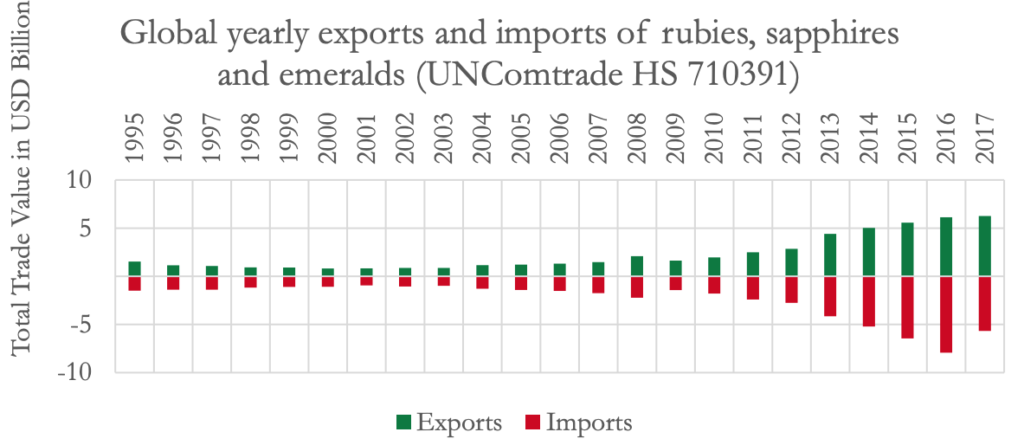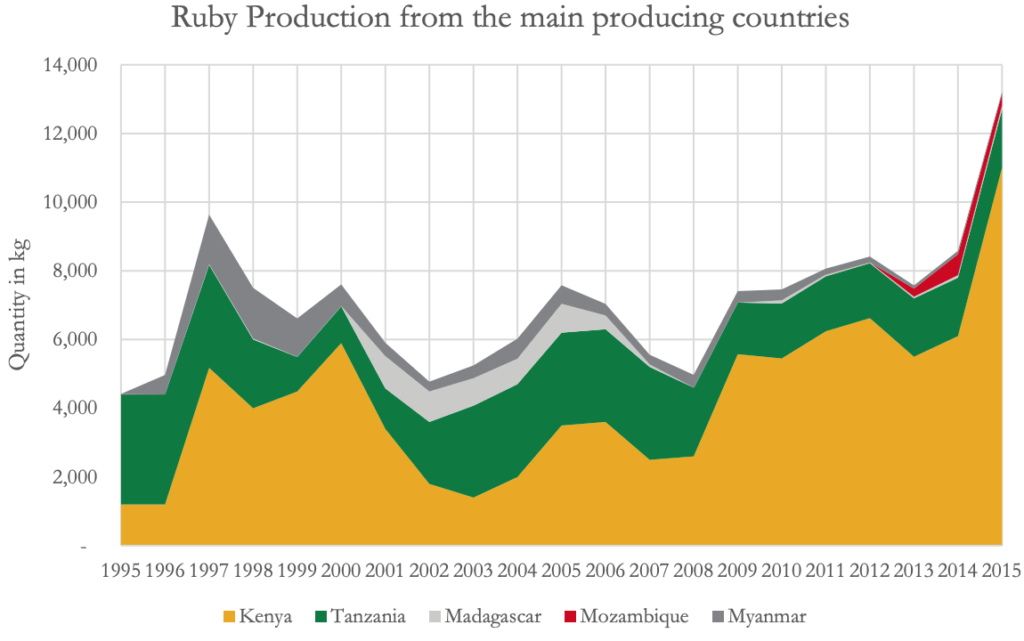
[ad_1]
“A glaring issue in the coloured gemstone industry is the disparity in the value assigned to a gemstone, particularly in its rough form, especially within (or at the borders of) the producing country,” the report reads.

By overlaying data sources, including information from its 75%-owned Kagem emerald mine in Zambia and Montepuez ruby mine (MRM) in Mozambique, Gemfields found a 30-million-fold difference between the value of the highest – $600,0000 per gram – and lowest – $0.02 per gram – value products mined at MRM.
“This has profound implications for deposit-hosting nations. Allowing the price to be set at the point of export from the host country inevitably leads to acute under-pricing, given how subjective pricing is,” the review reads. “Setting the value of rough gemstones at the time of foreign sale, rather than at the point of export, would remedy this.”
Analyses of the existing data retrieved from production, extraction and export reports also highlight the fact that official export data are likely to seriously understate the true value of the gemstones that leave a deposit-hosting country and the extent to which host nations are being robbed of the true value of their coloured gemstone resources.
“Therefore, greater efforts to combat the illicit trade are imperative,” Gemfield’s document reads.
As an example of what can be done to improve the way the gemstone sector operates, Gemfields presents the case of its MRM operation, which joined the ‘ruby rush’ in the Montepuez area a decade ago and whose effort to join forces with artisanal and formalized small-scale operators led it to significatively up its production and the returns to Mozambique, accounting for 94% of the country’s official monetary inflows of rubies, emeralds and sapphires from January 2011 to June 2021.
“Prior to MRM’s first auction in June 2014, and since January 2011, when the data commences, cumulative exports of rubies, sapphires and emeralds across all Mozambican producers totalled less than $1 million,” the report reads. “The data makes it clear that, with the exception of MRM, Mozambique’s emerald, ruby and sapphire wealth simply evaporated over the last decade.”

The research conducted by the firm also allowed it to estimate that Mozambique provides around 40% of the world’s production volume of rubies in all qualities and has supplied between 50% and 70% of yearly facet-quality rubies.
Zambia, on the other hand, is believed to have accounted for more than 70% of global emerald production since 2010, while Gemfield’s Kagem mine in the South African country is considered to be responsible for at least 50% of the nation’s total emerald production and, in consequence, 35% of the world’s production of the green gemstone.
These conclusions, however, are to be taken with a grain of salt, the report’s authors say, as the data collected and used are often inconsistent and far from robust.
“Yet, these are the only data sources readily available for analysis and interpretation. While rather fuzzy, they allow an initial picture to be formed,” the dossier states. “Gemfields invites other industry players and sources to collaborate, to help improve the strength of these data and work together to compile a subsequent research report in late 2022.”
[ad_2]
Source_link